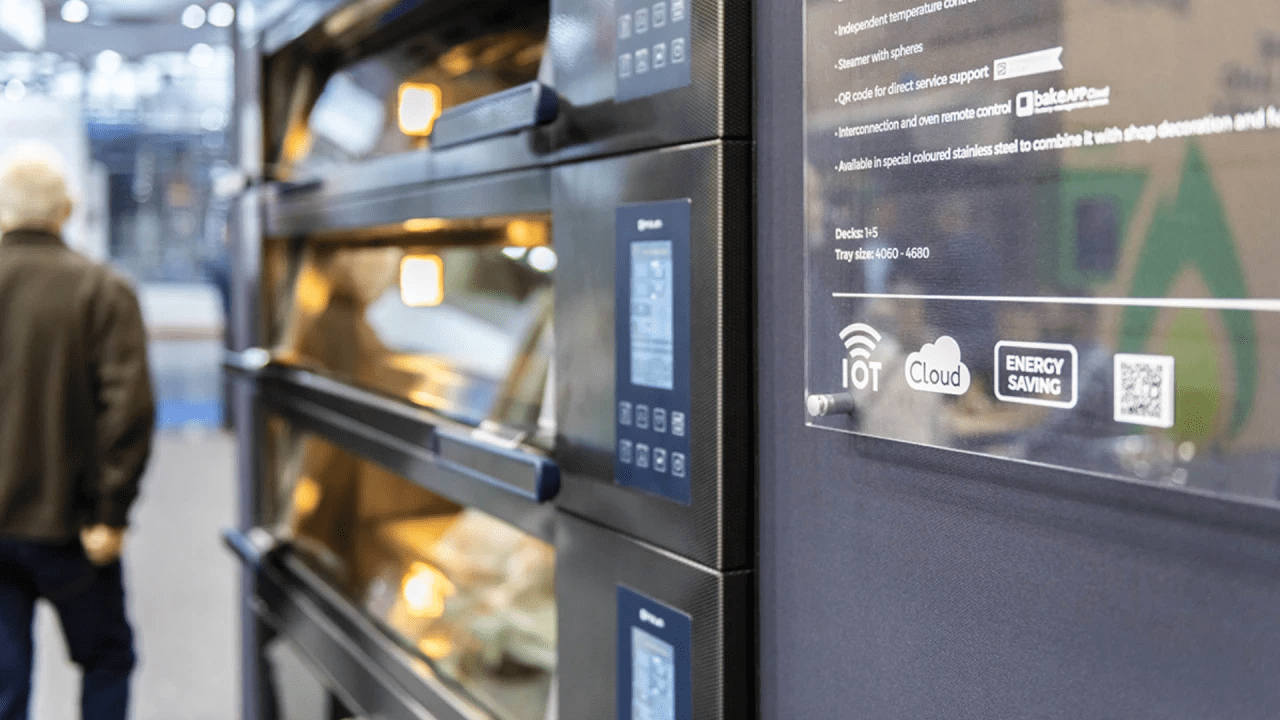Fiam, which for over 70 years has been the most modern and dynamic Italian company producing the industrial air motors

The food industry is multi-sector and uses the most diverse equipment in production processes. For example, it includes machinery for mixing substances or liquids, kneading or capping or motors for driving meat clippers.
But that is not all. There are also requirements for motion with devices for driving-dragging, lifting or wrapping, or for actuating mechanical parts, and utensils are also often used for processing food by hand.
However, what does such a diverse range of machinery have in common? The person who can tell us is Nicola Bacchetta, sales and marketing director of Fiam, which for over 70 years has been the most modern and dynamic Italian company producing the industrial air motors used in these different applications, and more.
To be more specific, what machines/processes are we talking about?
There are many food industry applications, but I can summarize the machines that today use our air motors. The applications currently covered by Fiam are:
• Meat shavers and slicers
• Fish deboning machines
• Dairy equipment
• Bottling, capping and filling machines
• Coating and wrapping machines
• Machinery for mixing substances or liquids
• Kneading machines
• Machinery for sausage processing (for example casing spinner devices)
• Clipping machines
• Feed/drive/lifting devices
Why is air technology the best fit for the food industry?
In this sector, air technology is preferred over electrical technology due to safety issues related to the water and humidity that is always found in production sites, and because its versatility makes it ideal for countless customizations.
Still comparing safety aspects with electrical technology, air motors can withstand repeated starts and stops during operation compared to electric motors of equal power and they will not overheat when they stall: air motors actually cool down while running, thus preventing any risk of short circuit.

The size of air motors already gives them a head start with respect to electric motors of equivalent power: their compactness and limited weights makes them about one quarter smaller and therefore easier to install on any machine.
Furthermore, in addition to being extremely efficient even at low supply pressures, they have basic parameters such as torque, speed and direction of rotation that can be controlled and modified simply and without the need for control units as in the case of electric motors.
To finish the comparison with electrical technology, it is important to note that air motors consume one third less energy than electric motors when stopping and starting frequently during a productive shift: a key factor with the increasing focus on consumption that every company is forced to face nowadays.
Finally, other factors that make the vane motor one of the most popular technologies still today are its versatility of use and robustness, which guarantee long-term durability even in the most severe conditions of use or in situations with high radial and/or axial loads, as well as operating reliability in any situation.
Specifically, what are the main benefits of air motors for food machinery?
As mentioned before, food-processing environments contain a great deal of moisture, and water is used constantly for cleaning and sterilizing. This means that the machines, and therefore the motors they contain, must have the following characteristics:
• Certified IP67 protection rating, which prevents water/ steam/dust from entering the motor and damaging it
• Safety and operational reliability even at high temperatures
• High resistance to corrosion from corrosive chemicals or detergents; in this regard, galvanically treating internal components and the external body of the motor make them highly resistant to aggressive agents
• Made from high-quality steels that meet ISO standards
• Have gears lubricated with food-grade lubricant
• External surfaces without pockets or cavities where dust and dirt can build up, with at least 40% less roughness to make cleaning and sterilization easier
• Internal linings with special treatments to reduce vane friction and increase motor service life with little or no lubrication, depending on the target environments.
We talked about customization before. What levels can be achieved?
We have seen that the size factor is decisive for use in machinery, and customization is often necessary, not only regarding the size/weight of the motor, but also tailor-made clamping and output shafts adapted to the application.
However, many other customizations can be made: from the material types used to make the motor, such as specific food-grade stainless steels or plastics, to customised performance parameters such as power, very low speed operation or non-lubricated air supplies, an indispensable condition in the food sector.
The value added by Fiam customizations, however, is the ability to create “unique” solutions, which are often conceived through co-engineering together with the customer. This is a very important distinguishing aspect, and our R&D department has engineers dedicated solely to motor design.
Together with the Product Managers and Sales Engineers, these engineers are part of a fast and coordinated staff focused on managing these orders. I say this because, in addition to air motors, our company also designs and manufactures industrial, manual and automatic assembly systems with air and electrical technology, as well as a large number of air tools for industrial maintenance.
Why choose Fiam air motors?
The first answer that comes to mind is a source of pride: we have been manufacturing air technology for over 70 years, and to date we have designed and built over 1.5 million air motors, which are working all over the world. Over this long period, we have consolidated an extraordinary experience in this technology, solving many applications in a range of industrial sectors.
We continually make this know-how available to our customers, and it is a factor that makes the difference, since together with a mix of cutting-edge production technology, efficient service and affordable price, we offer a truly unique and competitive range of products and services.

Another important reason to choose us is “Made in Italy”: our air motors are designed and manufactured in Italy, entirely at our production site in Vicenza, where there are departments dedicated exclusively to making motors and prototypes.
It is precisely this short production chain that allows is to fulfil even the smallest customised runs in short times. Moreover, we have over 1000 standard models in our catalogue, which can cover most of our customers’ requirements. When choosing, our customers know that they can count on dedicated Product Managers with acknowledged extensive experience, which means they can fully understand every application need.
Finally, there is an increasingly critical factor: consumption. We have already said that air technology offers savings compared to electrical technology of equal power, but it must also be emphasized that consolidated design experience, machining accuracy and continuous investments in the most advanced machinery ensure that our air motors operate continuously for thousands and thousands of cycles.
Our air motors are assembled and coupled with tolerances in the order of one thousandth of a millimeter. This results in the greatest efficiency optimization: the compressed air does not leak and air consumption extremely low, ensuring lower maintenance and repair costs and highly functional and profitable investments.
What are your distribution channels and service levels?
I have already talked about the short internal production chain and the dedicated Fiam team that allows us to control the cycle of each order step by step. Regarding the distribution, we have two branches operating in France and Spain and we can count on a dense network of distributors in 80 countries worldwide, which are committed to ensuring a local pre and post-sale service.





